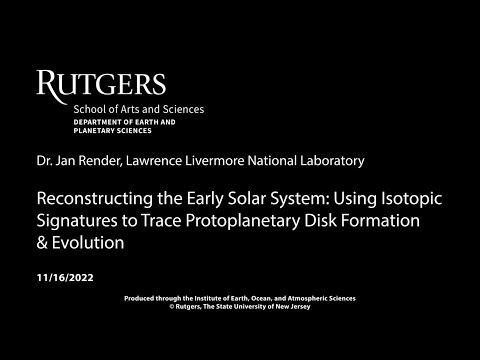Description:
Save Big on Coursera Plus. 7,000+ courses at $160 off. Limited Time Only!
Grab it
Explore the formation of our solar system in this 52-minute colloquium talk by Dr. Jan Render from Lawrence Livermore National Laboratory. Delve into stellar system formation, meteoritic building blocks, and the role of water as a proxy. Examine innovative approaches using isotopic anomalies, focusing on Molybdenum (Mo) and Neodymium (Nd). Investigate challenges in studying basaltic achondrites, including the absence of Molybdenum and issues with irradiation and neutron capture. Analyze the results to understand spatial versus temporal aspects of early solar system development. Consider two non-exclusive scenarios and integrate isotope data to reconstruct the conditions and processes that shaped our cosmic neighborhood billions of years ago.

Reconstructing the Early Solar System
Add to list
#Science
#Astronomy
#Solar System
#Earth Science
#Geology
#Geochemistry
#Isotope Geochemistry
#Meteorites